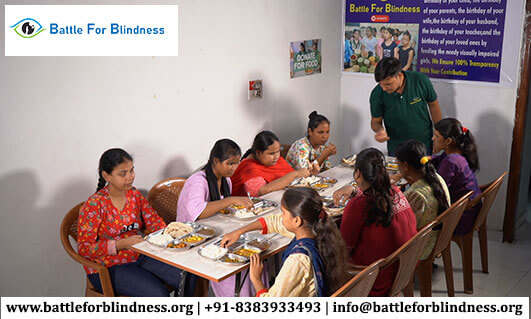
Creating a home that is both functional and comfortable is crucial for everyone, but it becomes even more important when designing for accessibility needs. For visually impaired individuals, a well-adapted environment can significantly enhance independence, safety, and overall quality of life. Here are practical design tips to consider when adapting home environments for enhanced accessibility.
1. Optimize Lighting and Contrast
Effective Lighting: Proper lighting is essential for enhancing visibility and reducing the risk of accidents. Use a combination of natural and artificial light sources to create a well-lit environment. Ensure that lighting is adjustable and bright enough to illuminate key areas without causing glare.
High Contrast: Incorporate high-contrast colors in your design to help visually impaired individuals distinguish between different surfaces and objects. For instance, use contrasting colors for door frames, light switches, and furniture against the walls and floor.
2. Implement Tactile Markers and Braille
Tactile Signage: Use tactile markers, such as raised patterns or textures, to help identify key locations like room numbers, exits, and appliances. These markers can be placed on door frames, stair edges, and other important areas.
Braille Labels: Incorporate Braille labels on important items such as kitchen appliances, switches, and control panels. This helps visually impaired individuals navigate and operate these items with ease.
3. Ensure Clear Pathways and Clutter-Free Spaces
Unobstructed Pathways: Maintain clear and wide pathways throughout the home to prevent tripping hazards and make navigation easier. Ensure that furniture and other objects are placed in fixed positions to avoid accidental collisions.
Organized Spaces: Keep frequently used items within easy reach and in consistent locations. Use open shelving and organized storage solutions to make it easier to find and access items.
4. Incorporate Smart Home Technology
Voice-Activated Devices: Utilize voice-activated technology, such as smart assistants and voice-controlled appliances, to simplify daily tasks. These devices can help with tasks like controlling lighting, adjusting thermostats, and managing home security systems.
Smart Sensors: Install smart sensors that provide audio or tactile alerts for important notifications, such as doorbells, alarms, or changes in environmental conditions. These sensors can enhance safety and awareness within the home.
5. Design for Safety and Comfort
Non-Slip Flooring: Choose non-slip flooring materials to prevent falls and enhance safety. Mats and rugs should also have non-slip backing to avoid movement and potential accidents.
Accessible Bathroom Features: Install grab bars, non-slip mats, and adjustable showerheads in the bathroom to improve safety and accessibility. Consider a walk-in shower or a shower seat for added convenience.
6. Create a Personalized Environment
Customizable Settings: Allow for adjustable features, such as height-adjustable countertops, movable shelving, and customizable lighting settings. Personalization helps meet individual needs and preferences, enhancing comfort and usability.
Feedback and Involvement: Engage with visually impaired individuals to gather feedback and understand their specific needs. Involving them in the design process ensures that the home environment is tailored to their unique requirements.
Conclusion
Adapting home environments for enhanced accessibility is a vital step in creating a more inclusive and supportive living space for visually impaired individuals. By optimizing lighting, implementing tactile markers, ensuring clear pathways, incorporating smart technology, and focusing on safety and comfort, you can create a home that promotes independence and improves quality of life. Thoughtful design not only enhances functionality but also fosters a sense of belonging and well-being.





